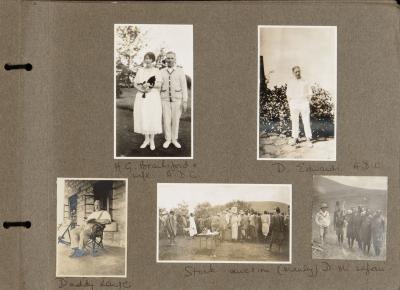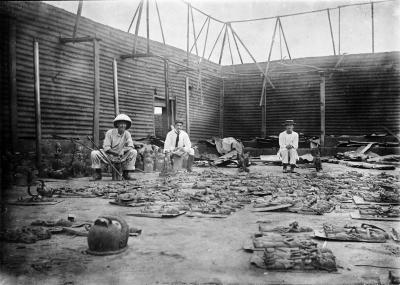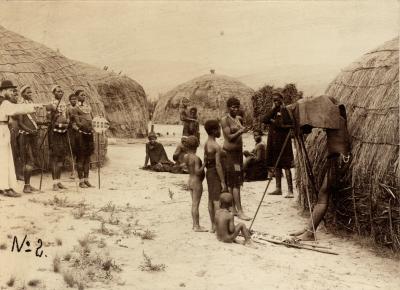What is colonial about colonial photographs ?
Critical theory and post colonial theory tend to assume an homogenous ‘colonial archive’. However we found that on the ground, within the spaces of public history, there were no clear cut definitions of what might constitute a ‘colonial photograph” and under what circumstances.
Part of the problem is the concept of the colonial itself as it is popularly used. It is all embracing, used to describe a very wide range of historical experiences, power relationships and modes of encounter over space and time. This homogenisation has obscured as much as it has revealed. Related to this position, it has been argued that the colonial cannot be contained within the one term to the extent that understanding will be “obstructed if we assume that the word [colonial] relates to any meaningful category or totality,” “colonial cultures are not simply ideologies that mask, mystify or rationalize forms of oppression that are external to them; they are also expressive and constitutive of colonial relationships themselves.”[i] Thus, to quote Chris Pinney, “colonialism refuses historiographical compartmentalization: it rapidly unfolds into the history of the modern world: modernity and globalization are intimately entangled with colonialism.”[ii]
However in many ways the ‘colonial’ and its archival traces has many of the characteristics of what Gell has described as “the distributed object’: that is, it is an object which has, at one level, a clear coherence, yet is comprised of “many spatially separated parts with different micro-histories”.[iii] Colonialism, with its entanglement of political social and economic practices, ideologies, relationships, collections and archives, might be seen as such an object.
This historiographical concern raises therefore the question “what is a colonial photograph”. Throughout the project we found it increasingly useful to think about photographs and ‘the colonial past’ rather than ‘colonial photographs’, precisely because of the awkwardness of definition. Is the colonial a photograph that was made under the conditions of colonial relations ? Is it one that serves the purpose of colonial agendas, for instance in Norway where the state was not a colonial power in the territorial sense but many Norwegian citizens were engaged in colonial related activity ?
Is “the colonial’ defined by style or genre, for instance the clear articulation of power relations, such as the images of colonial science or colonial administration ? How do these categories shift over time ? For instance, until the 1980s those involved with the Tong-Tong project in the Netherlands (a community association for those with roots in Indonesia), talked about colonial photographs as those images that included the colonizer. Those showing the local population were Indische photography. Both categories have now become conflated as ‘colonial photographs’ because they were taken in the colonial period, by a white photographer. On the other hand, given the very different contexts of colonial experience, much of the photographic trace of the colonial is hidden in private and family archives, and is not engaged with as ‘colonial’.
Many curators we talked to assumed that the category ‘colonial photography’ filled specific generic tropes: for instance, overt power relations, the wearing of pith helmets, the presence of servants, or photographs of ‘natives’. As a UK curator put it to us: ““There’s a certain iconography that’s picked out as being … a colonial photo…” relating a stereotype of the colonial. Photographs in other categories, for instance family photographs in albums were not recognised as ‘colonial’ even though they were made specifically within the political, economic and social conditions of colonial relations. As the same curator continued: “if you look at the colonial period, then it brings along other genre of photographs as well … [that] some people don’t class as colonial photography” such as “landscape photography, [and] publicity photographs from rail companies.”
The invisibility of the assumed tropes of ‘the colonial photograph’ meant that this saturating force that permeates many different forms of social and historical relations is not recognised as ‘colonial’. This position is not constant across institutions, despite the similar shape and content of photographs held in institutions. For instance the Dutch project some major institutions such as Fotomuseum and the Rijksmusem looked at aesthetic and technical quality over content. At the Wellcome Collection in London the aesthetic was used as a way of eliding the colonial embeddedness of collections. The colonial operated as a much stronger category in museums where the informational qualities of photographs were of greater importance, such as the National Museum of Ethnology Leiden, the Tropenmuseum, or Pitt Rivers Museum.
However the similarities between these three institutions also hid differences. For instance, the Dutch colonial experience was at the core of the Tropenmuseum’s collecting, whereas in Leiden the ‘anthropological interest’ meant that definitions of the colonial were both broader and less overt. At the colonial has never been a central category at Pitt Rivers, despite the emphasis on collections history. As a curator there commented: “I’m not convinced that the museum has really much ever collected self-consciously these colonial relationships”. In the contexts of that museum “you can see researchers passing over some of this stuff, … the family sitting on the lawn in India, … [to] get to the bit at the back which is their collection of anthropology photos, to get to the content, the anthropology content.”
The definition of colonial photography is fluid and unfixed, often an adaptation to a collective understanding of a well-known, but vague, phenomenon. The definition of colonial collection and the colonial photograph is therefore also is dynamic. Many collections, spread through many different kinds of institutions, are just now beginning to be evaluated and appraised. In many ways it is a broad lack of knowledge about collections, their contents and potential interpretative strategies, as much as the perceived difficulty of the subject matter, which renders them ‘invisible’.


